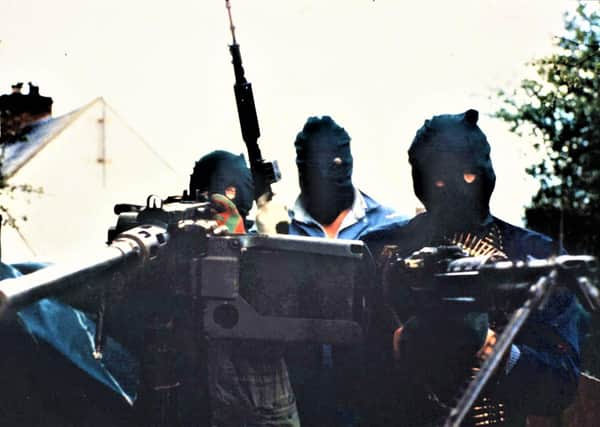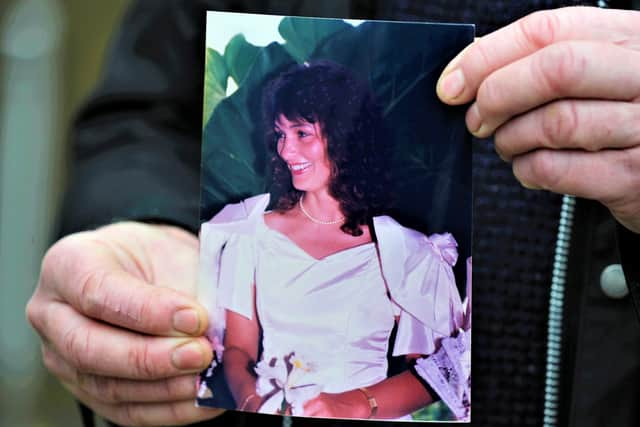Ex-Special Branch man says: ‘RUC are always being blamed – but where is the focus on Garda?’


That is the view of former Special Branch officer Dr William Matchett, following the release of this week’s police ombudsman’s report into the death of the 34-year-old constable.
The ombudsman had combed through all the available evidence surrounding the horizontal mortar attack which claimed her life in Newry on March 27, 1992.
Advertisement
Hide AdAdvertisement
Hide AdShe died in hospital, while another officer – a good friend of Dr Matchett’s – suffered life-changing injuries.


No-one has ever been convicted of the attack.
The ombudsman’s report found that whilst there were shortcomings in the investigation, the RUC had no intelligence which would have allowed them to prevent the murder – and she went on to note the dedication and sacrifice of the officers who served during such dangerous times.
One of the things the report highlights is the cross-border nature of the IRA teams who were behind the fatal explosion, and others like it.
However, the ombudsman’s focus is necessarily on the RUC’s handling of the terror threat, not the Garda’s.
‘DUNDALK WAS LIKE EL PASO’
Advertisement
Hide AdAdvertisement
Hide AdDr Matchett – author of the book ‘Secret Victory: The Intelligence War That Beat the IRA’ – said: “A border not policed on the southern side was an enormous enabler of republican violence.
“Dundalk was El Paso, and purely because of geography police officers in Newry paid a heavy price.
“Yet, in looking back at the past the only people investigated and spotlighted for blame is the RUC.
“There is nothing similar for the Garda, or for that matter a Dublin government that decreed PIRA murder a legitimate act [by] refusing extradition requests.”
Advertisement
Hide AdAdvertisement
Hide AdIn the course of her investigation, ombudsman Marie Anderson found the following: “In early February 1992, police received intelligence that a new PIRA Active Service Unit had been formed in Dundalk, Co Louth.
“It was created to carry out attacks in Co Down, independent of South Down PIRA.”
The report also says that police had received intelligence stating “members of South Down PIRA and Dundalk PIRA were involved in the design, construction, and testing of ‘flash-initiated’ explosive devices” – and were tutoring IRA units in Armagh and Belfast on how to use these new detonators.
The devices in question were triggered by light from a kind of flash gun, instead of using radio waves (which the security forces had become adept at blocking).
Advertisement
Hide AdAdvertisement
Hide AdThe bomb which killed Colleen McMurray was one of these light-gun devices, and it had been hidden inside a car which was stolen from Dundalk.
Several months before her murder, the IRA had blown up a pizza parlour in Warrenpoint using the same kind of technology.
In that case too, the car carrying the bomb had been stolen from Dundalk.
The ombudsman’s report goes on to state that an individual called Person F had been linked to the Dundalk IRA unit, and was believed to have had a hand in Constable McMurray’s murder.
Advertisement
Hide AdAdvertisement
Hide AdIntelligence linking him to the attack was shared with the lead investigator, but only belatedly. At the time it was shared in early 1994, Person F was living in the Republic.
The ombudsman goes on to say Person F has “to date not been arrested” over the attack.
‘THESE WERE CROSS-BORDER UNITS’
Dr Matchett added: “My thoughts and prayers are with the family of Colleen, and the injured officer and his family.
“I applaud the police ombudsman for heralding their sacrifice and bravery.
“I know the injured officer well. He is a good friend.
Advertisement
Hide AdAdvertisement
Hide Ad“When he was recovering, he made a point of not blaming the good people of Newry, but narrowed it down to a few extremists ...
“These were cross-border terrorist units who based most of their munitions in the Republic, and after an attack fled back across that imaginary line.
“They spent more time in north Louth than south Down. Unless caught red-handed, arrests were cosmetic.
“They rarely left forensic evidence at a crime scene and no civilian was going to stand up and testify against them. The odds were stacked against the senior investigating officer.”
More from this reporter:
Advertisement
Hide AdAdvertisement
Hide AdClick here>>> Former IRA ‘folk hero’ is ‘hardly fitting face for Amnesty International campaign’ say unionists
A message from the Editor:
Thank you for reading this story on our website. While I have your attention, I also have an important request to make of you.
With the coronavirus lockdown having a major impact on many of our advertisers - and consequently the revenue we receive - we are more reliant than ever on you taking out a digital subscription.
Advertisement
Hide AdAdvertisement
Hide AdSubscribe to newsletter.co.uk and enjoy unlimited access to the best Northern Ireland and UK news and information online and on our app. With a digital subscription, you can read more than 5 articles, see fewer ads, enjoy faster load times, and get access to exclusive newsletters and content. Visit https://www.newsletter.co.uk/subscriptionsnow to sign up.
Our journalism costs money and we rely on advertising, print and digital revenues to help to support them. By supporting us, we are able to support you in providing trusted, fact-checked content for this website.
Ben Lowry
Acting Editor